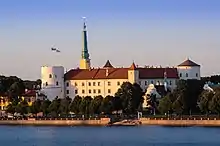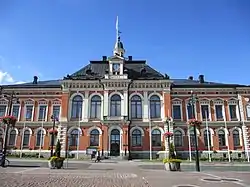The European Region of Gastronomy is a title given every year to one or more cities or regions in Europe. The title is awarded by the International Institute of Gastronomy, Culture, Arts and Tourism (IGCAT).[1][2]
Goals
The goal of the project is to contribute to the better quality of life by:
- raising awareness about the importance of cultural and food uniqueness
- stimulating creativity and gastronomic innovation
- educating for better nutrition
- improving sustainable tourism standards
- highlighting distinctive food cultures
- strengthening community well-being[1]
List of European Regions of Gastronomy
| Year | City/Region | Country | Notes | Links |
|---|---|---|---|---|
| 2016 | Minho | Minho 2016 | ||
| Catalonia | Catalonia 2016 | |||
| 2017 | Riga, Gauja | Riga-Gauja 2017 | ||
| East Lombardy | East Lombardy 2017 | |||
| Aarhus, Central Denmark | Aarhus-Central Denmark 2017 | |||
| 2018 | North Brabant | North Brabant 2018 | ||
| Galway, Western Ireland | Galway was also named the European Capital of Culture for 2020 | Galway-West of Ireland 2018 Archived 2020-06-09 at the Wayback Machine | ||
| 2019 | Sibiu | The Transylvanian town was also the European Capital of Culture in 2007 | Sibiu 2019 | |
| South Aegean | South Aegean 2019 | |||
| 2020 | Kuopio | Also counts for 2021 because of the COVID-19 pandemic | Kuopio 2020-2021 | |
| 2021 | Coimbra | Also counts for 2022 because of the COVID-19 pandemic | Coimbra 2021 | |
| Slovenia | The only country to have been included as a whole so far | Slovenia 2021 | ||
| 2022 | Trondheim, Trøndelag | Trondheim-Trøndelag 2022 | ||
| Menorca | Menorca 2022 | |||
| 2023 | Hauts-de-France | Hauts-de-France 2023 |
See also
References
This article is issued from Wikipedia. The text is licensed under Creative Commons - Attribution - Sharealike. Additional terms may apply for the media files.
.jpg.webp)


